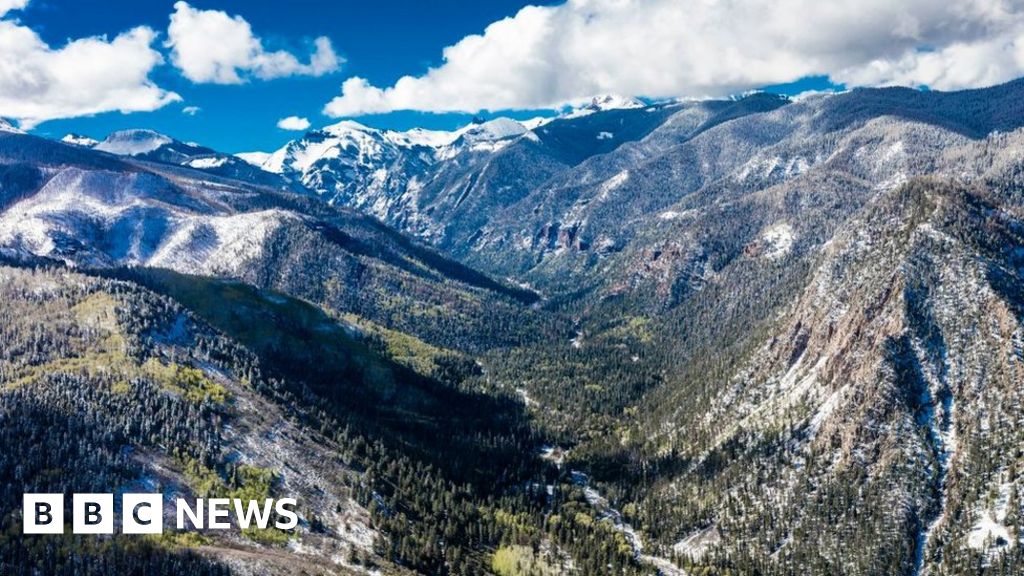In Colorado we find the bodies of hikers who failed to tell anyone where they were going, every year. A surprising number of who deside to hike in the winter and don’t properly pack for the weather, don’t go in a group, and don’t inform anyone what trail they are taking.
Always and every time infom other exactly where you are hiking, what time you are starting and do not change your plans.
Apparently someone tried to bushwhack to the top of 13’er just a few days ago. He had a cotton hoodie and nothing else. In November.
Rescue found him at 2 am upright in the fetal position and covered in snow. It took 5 hours to get him down from his perilous position. He’s somehow still alive.
I often wonder about people like that. Will he learn from it and grow or was he up there in those conditions precisely because he’s not the sort of person to take important life lessons to heart?
And for chrissakes try and use a reliable trail map
You can do everything right and still end up in trouble.
Yes, because shit still happens. But many incidents can find their source in people not being well-educated in the dangers, ignoring standard warnings or procedures, and/or how to solve issues.
I’ve lived in remote areas and even locals have gotten into trouble, ie: using a logging road shortcut in a snow storm then dying by carbon monoxide poisoning, walking/driving on an ice road then drowning (because the ice isn’t thick enough).
We don’t deserve dogs. But I’m glad they put up with us.
Removed by mod
It probably wouldn’t hurt for you to start carrying an emergency bag around in your trunk on outings like this. It doesn’t take up much room and could safe your life. Some food and water and something warm (clothes, sleeping bag, or both) could really go along way, esp if rescue can’t come immediately and it’s really cold out there, or you need to hoof it out.
I keep one in my car all the time, and these days I don’t get out into the woods all that often.
But sometimes having a bag with some snacks, water bottles, a nice knife, compass, small first aid, and warm clothes is just handy.
Last winter my car battery completely died after a failed stop off at a gas station that turned out to be closed. and I was able to stay warm in the car by just putting on the extra sweater and eating a cliff bar while I waited 2 hours for my wife to get a new battery to me.
I also eat the snacks and drink the waters more often than probably necessary, just because of long trips to see family out in the sticks.
The compass also came in handy when my phone died halfway through Iowa and I had to navigate with a paper map to the nearest town to buy a charger. Knowing which way is north on a cloudy day in the cornfields is handy.
Having a basic emergency kit in your vehicle that’s good for more than just jumping your car or changing a flat is very useful. I’ve needed a warm sweater or rain coat way more often than a Jack or jumper cables.
Removed by mod
My only suggestion is to keep it light. A week of food, unless it’s dehydrated, is very heavy, and if it’s dehydrated you need to carry the water for you to drink, plus the water for rehydrating your food.
You can go a long time without food, even while doing moderate exercise like walking in rough terrain. Water, you can only go 2 or 3 days without it and you’re done.
I refer to my kit as a “shitty night” Kit. Bug out bag implies long term survival, whereas my emergency kit is more for making one or 2 shitty nights in the woods survivable. The whole thing weighs like 7 pounds with the water, and has a metal camp cup for boiling water if I really need to. I can comfortably carry it all day, in case I decide I need to leave the car.
The actual contents, if you want an idea, is something like this, although I do change it from time to time.
Small “pocket” first aid kit, as you find in camping stores, with 2 pads of gauze and a tube of neosporin crammed in.
12 oz camping pot/cup for making a warm drink. I put some tea packets with this, because a cup of tea during and after a cold night just sounds good.
A decent gerber multitool, because a knife and pliers are always helpful.
An oversized poncho, which doubles as a rain coat, and can be repurposed into water proof shelter with the aid of a handy tree.
About 50 feet of paracord, for tying down said raincoat.
Space blanket for those really cold nights.
A fleece sweater, spare socks, and long thermal underwear. These are by far the bulkiest, and I’m tempted to get rid of the thermal underwear as I’ve never needed it. But I do pull out the rolled up sweater all the time when it’s colder than I thought. It’s very thin but warm, and rolls up very small. I’ve needed the socks too, after discovering a hole in my shoe after walking through a puddle.
A small flashlight with spare battery.
Fixed blade Mora knife.
A roll of 1” wide gorilla tape I found at the hardware store. It’s only about the size of a roll of electrical tape, but is handy for patching things. I’ve used this more in my car for taping things shut, should probably replace it now that I think about it.
A few lighters and a couple camp fire starter sticks in a plastic bag.
3 or 4 cliff bars, as those are my favorite granola bars.
A couple water bottles in the pockets on this side of the bag.
And finally, a good compass. Not one of those button deals that never reads properly and only vaguely tells you where north is if it decides to work. A real compass with the full 360 degrees marked on it and a sighting window for taking bearings. If you’re lost in the woods and have a map of the area, a real compass will let you figure out where you are and what direction to go to find the nearest thing to safety.
And that’s about it.
My grandfather once told me a story of getting lost with a friend of his while elk hunting in the Rockies. Between them they had their rifles, hunting clothes, and a knife set, but basically nothing else. His friend had a “survival kit” that he always talked about. The kit had everything he thought he needed for about a week. Where was the kit? Back at their camp because it weighed like 20 pounds and he didn’t want to carry it. Luckily, his friend was a smoker, so they were able to get a fire going and wait out the night until the other 2 in the group called for help. But it was pretty rough from what he said. I took that lesson to heart. The stuff you have on you and are willing to carry is way more valuable than the duffle bag full of stuff you left in your car 10 miles down the trail.
deleted by creator







